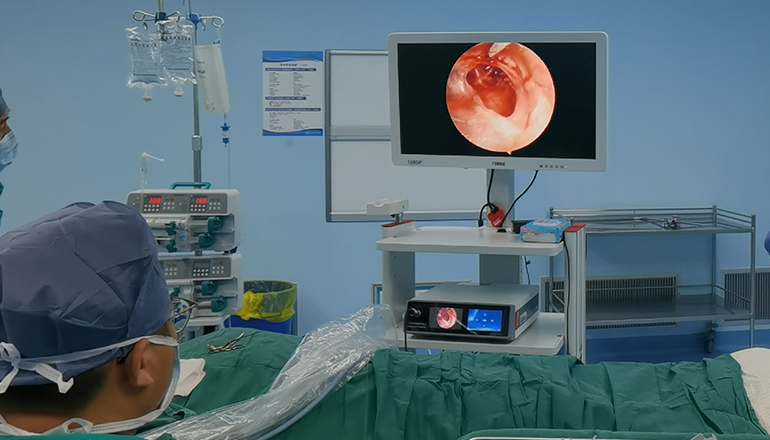- Shanghai, China
- [email protected]
- +86-21-58189111
Endoscopic surgery in ENT requires specialized instruments that can be inserted through the narrow endoscope and allow the surgeon to manipulate tissue with precision. Here are some of the commonly used ENT endoscopic surgery instruments:
Forceps: Endoscopic forceps are designed to grasp tissue and manipulate it with precision. They come in different sizes and shapes, depending on the specific procedure being performed.
Scissors: Endoscopic scissors are used to cut and remove tissue. They are designed to fit through the narrow endoscope and come in various shapes, such as straight or curved.
Graspers: Endoscopic graspers are used to hold and manipulate tissue during procedures. They are designed to fit through the narrow endoscope and come in different shapes, such as straight or angled.

Curettes: Endoscopic curettes are used to scrape tissue or remove polyps or other growths. They come in different shapes and sizes, depending on the specific procedure being performed.
Snares: Endoscopic snares are used to remove polyps or other growths by cutting them from their base. They are designed to fit through the narrow endoscope and come in different shapes and sizes.
Balloon catheters: Endoscopic balloon catheters are used to dilate narrow or obstructed passages, such as the sinuses or Eustachian tubes. The balloon is inflated to expand the passage, improving airflow and drainage.
Microdebriders: Endoscopic microdebriders are used to remove tissue or growths in a minimally invasive manner. They use a small rotating blade to cut and remove tissue.
Endoscopic drills: Endoscopic drills are used to remove bone or hard tissue in a minimally invasive manner. They come in different sizes and shapes, depending on the specific procedure being performed.
Overall, endoscopic surgery in ENT requires specialized instruments that allow the surgeon to perform procedures with precision and accuracy while minimizing trauma to the surrounding tissue. The instruments used in ENT endoscopic surgery are designed to improve patient outcomes by reducing the risks associated with traditional surgery, such as pain, scarring, and recovery time.
Leave a Comments